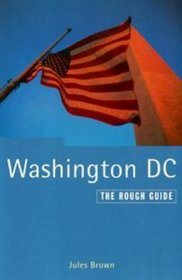Search -
The Rough Guide to Washington DC, 2nd (Washington, D.C. (Rough Guides))
The Rough Guide to Washington DC 2nd - Washington, D.C. Rough Guides
Author:
Introduction As a nation's capital, Washington DC - showtown USA - takes some beating. Along its triumphant avenues stand historic buildings that define a world-view, while on either side of the central Mall sit the various museum buildings of the planet's greatest cultural collection, the Smithsonian Institution. For an introduction to America... more »
Author:
Introduction As a nation's capital, Washington DC - showtown USA - takes some beating. Along its triumphant avenues stand historic buildings that define a world-view, while on either side of the central Mall sit the various museum buildings of the planet's greatest cultural collection, the Smithsonian Institution. For an introduction to America... more »
ISBN-13: 9781858284651
ISBN-10: 1858284651
Publication Date: 1/1/2000
Pages: 384
Edition: 2nd
Rating: ?
ISBN-10: 1858284651
Publication Date: 1/1/2000
Pages: 384
Edition: 2nd
Rating: ?
0 stars, based on 0 rating
Genres:
- Travel >> Reference >> Guidebooks
- Travel >> Travel Writing
- Travel >> Guidebook Series >> Rough Guide
- Travel >> United States >> Regions >> General
- Travel >> United States >> Regions >> South >> South Atlantic
- Travel >> United States >> Washington, D.C.
- Travel >> North America




